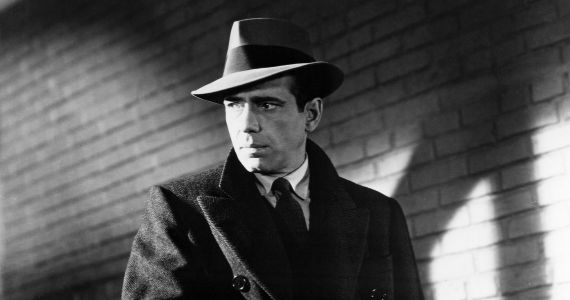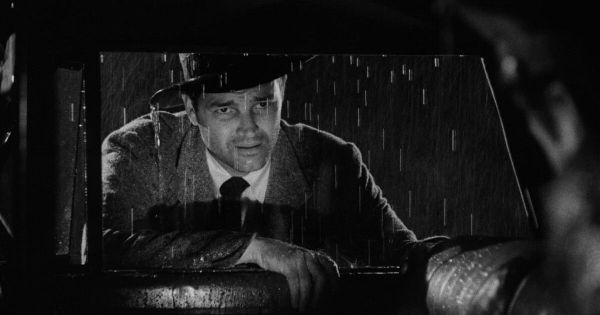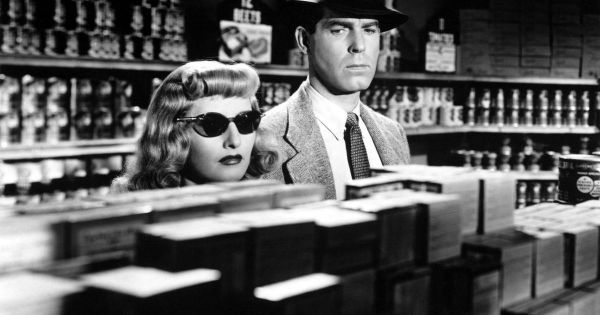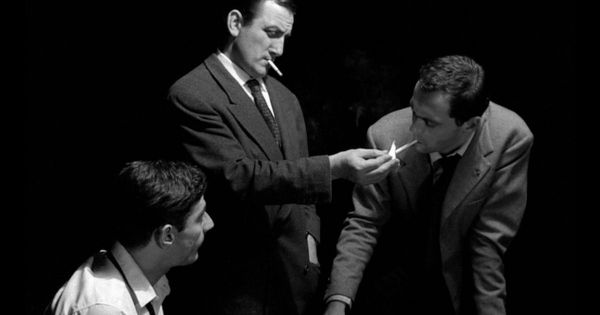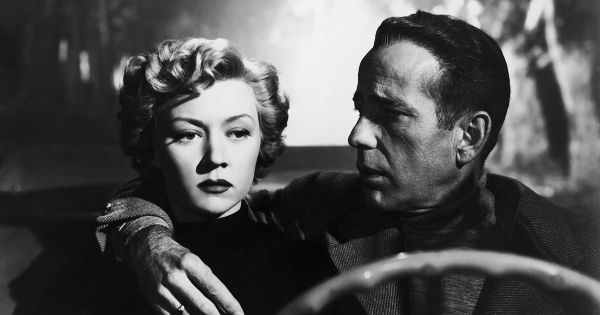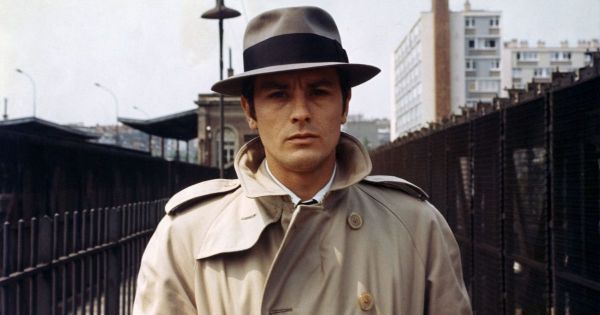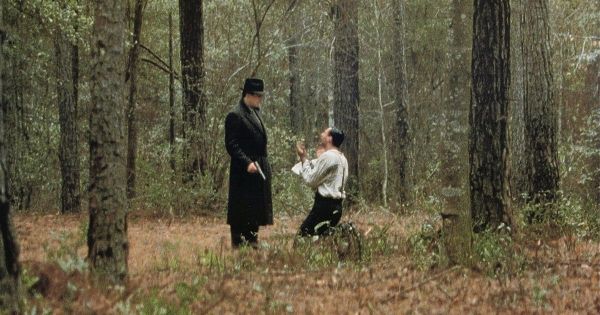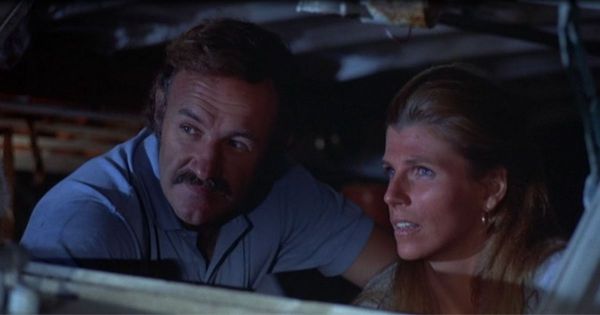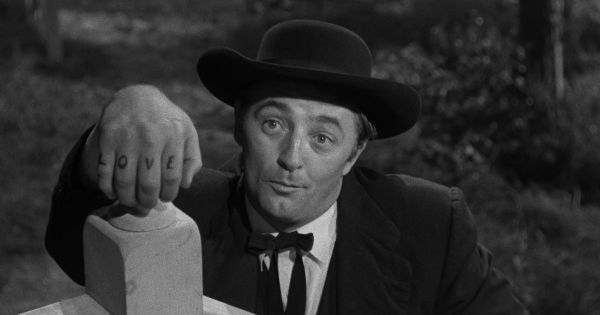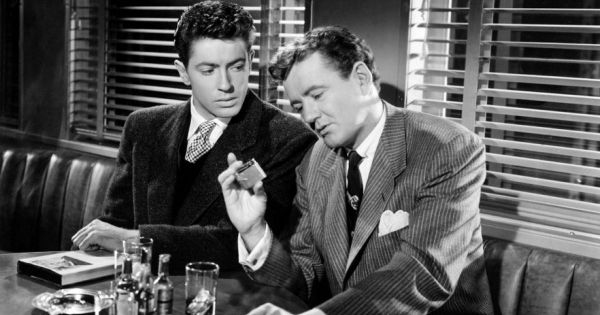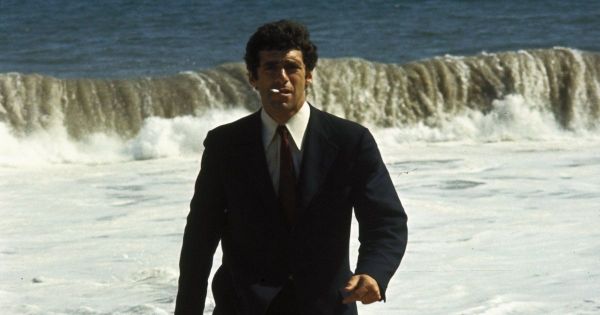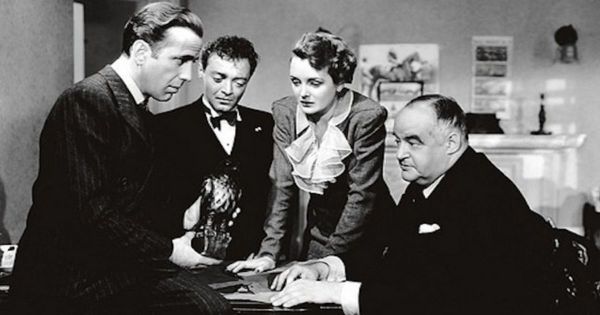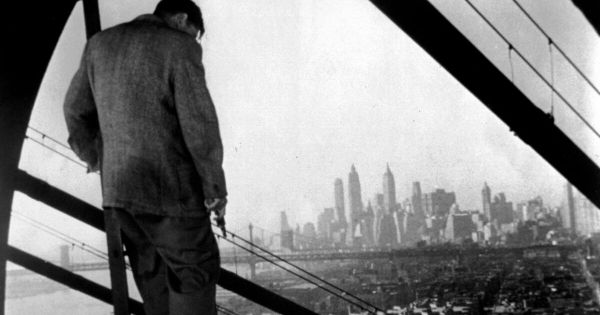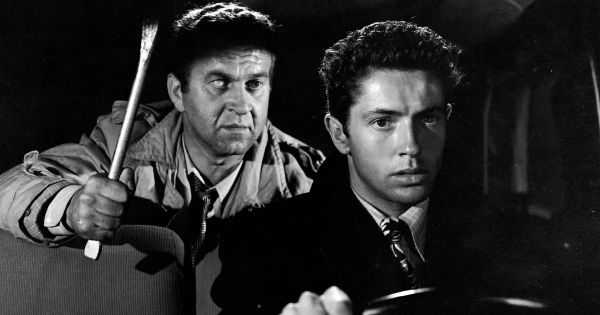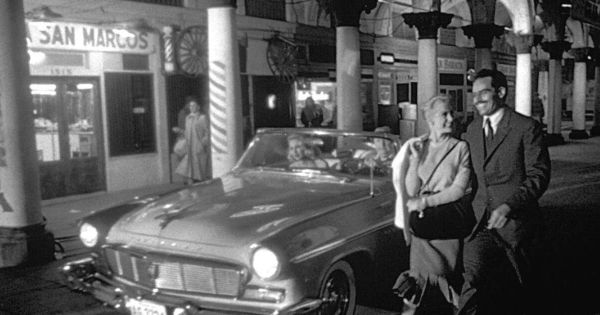Noir is one of the most important sub-genres in the history of film. It is one of the most popular and influential film styles of all time. Even though the genre isn’t as popular as it used to be, it has been around for a long time and has come back more than once. This makes it one of those styles that every film fan should be familiar with. The femme fatale, low-key lighting, heavy shadows, and a brooding lead actor are all common elements of the genre, but the films themselves might not be. In the same way, the goal of making a list of the most important and long-lasting movies in the genre is something that should be done. So, without further ado, here is a list of the most important films in the film noir genre that will help you get into the style.
Detour
Detour, a film from 1945, is an undisputed masterpiece of the film noir pastiche. It is only 68 minutes long and moves at a very fast pace. The movie’s strengths come from the fact that it is made up of very simple structures and archetypes. This lets both the screenplay and Edgar G. Ulmer’s direction really stand out. It’s probably one of the most loosely put together and thrown together noirs on this list, but it’s also one of the best examples of what can be done in the genre with very little.
A piano player hitches a ride on a whim to follow his girlfriend, a rising performer, but ends up in a freak accident that kills his driver. Assuming the identity of this now-dead stranger, the piano player must fool and trick the people around him, even as they start to get suspicious about his intentions. As stated, Detour is a B-movie at its core, but it is also all killer and no filler. It’s one of the best noir movies ever, and it doesn’t even come close to going on too long.
Double Indemnity
Along with The Maltese Falcon, Double Indemnity is one of the most well-known and important examples of the genre. The legendary movie that Billy Wilder made from the same-named James M. Cain book has gone down in history as one of the most important movies of all time. It set the stage for almost every double-handed, star-led noir movie that came after it. In Double Indemnity, an insurance salesman meets a provocative and attractive housewife who is accused of killing her husband. He also meets a claims adjuster who finds fake claims, which leads to a lot of lies and dangerous situations.
Wilder’s direction gives the movie a certain kind of energy while still keeping the same tone and point of view throughout the whole thing. It’s one of the best-made noir movies of all time, and you should look at it as a legendary piece of genre filmmaking in the making.
Elevator to the Gallows
Elevator to the Gallows is based on a 1957 book with the same name. It was made into a movie by Louis Malle, who took the dark, suspenseful crime story and ran with it. Elevator to the Gallows is a taut, very intense thriller that subverts the film noir genre by making the movie only about the characters and not the crime. It is about two people who aren’t married and are planning to kill each other, but one of them gets stuck in an elevator.
The way Malle directs and handles the movie makes it very experimental for its time, with improvised music by Miles Davis and a French New Wave look. If you want to see all the different ways that film noir can be made, Elevator to the Gallows is where film noir and the avant-garde meet.
In A Lonely Place
In A Lonely Place is another great film by Nicholas Ray. The legendary actor Humphrey Bogart gives one of his best performances in the main role. Bogart usually played charming, sure-of-himself leads in movies, but In A Lonely Place puts him in an interesting role as a down-on-his-luck screenwriter who is suspected of killing someone and is being chased by a dangerous femme fatale.
Ray directs this movie with a feeling of melancholy, giving each shot of Bogart’s wandering gaze a feeling of doubt. You never really know where the plot and characters are going until the end of the movie, but Bogart’s performance that isn’t typical of him is what makes the movie something truly special.
Le Samourai
Le Samourai, a classic crime thriller by Jean-Pierre Melville, shows what can be done in a well-known genre by someone who seems to be an outsider. People usually think of Noir as an American style, but Melville showed that the French can do it just as well. In Le Samourai, Alain Delon plays a professional killer who is trying to figure out who hired him for a job and then tried to kill him, all while being chased by a Parisian policeman.
Melville’s atmospheric, breathy direction gives the film a languid coolness that isn’t often found in the genre’s early works. However, the film still has the moody, dark tone that is typical of noir. The minimalist style of Le Samourai gives the film a coldness that brings to mind the noirs of the 1940s. The film also has a strict structure that helps it stand up to scrutiny. Even though this shouldn’t be your “first” film noir, it’s a great one to watch in the middle as you get used to the style.
Millers Crossing
Millers Crossing is one of the first movies made by the Coen Brothers, who are the creators of the modern form and function of neo-noir. It changes the way classic film noir moves. Millers Crossing has all of the typical elements of both the noir genre and the Coen Brothers’ style, which became well-known through their darkly comedic and often-celebrated series of films. The story is about a power struggle between two rival gangs and how the main character plays both sides against each other. However, it is directed and put together with such a light touch that it doesn’t feel like any other noir before or since. A neo-noir movie with the dark humour, goofy underdogs, and general dislike of the main characters that the Coens are known for is its own thing.
Night Moves
The neo-noir film Night Moves by Arthur Penn didn’t do well when it came out in 1975, but it has become one of the most interesting films in its genre over time. Night Moves is the sleazy, uncomfortable evolution of the film noir genre that was bound to happen as the genre entered its early years. Gene Hackman gives a great lead performance, and Melanie Griffith and James Woods are also great.
The term “neo-noir” is usually used to describe movies that were made after the first wave of film noirs in the 1940s and 1950s, but Night Moves uses the term to show that it is something new. In Night Moves, a private investigator in Los Angeles looks for the missing teenage daughter of a former movie star. As he searches for her, he finds a series of strange things happening and realises that the dark side of LA is even scarier than he thought.
Night of the Hunter
Night of the Hunter is one of the most famous noir movies of all time. It stars Robert Mitchum, who gives an all-time great performance, and was directed by Charles Laughton, who was a great director at the time. Hunter is about a serial killer on the run from a murder scene, played by Robert Mitchum. He pretends to be a travelling preacher and wins the trust of a recently widowed woman and her daughter. At the end of the movie, it’s revealed that Mitchum’s character is the one who killed this woman’s husband, which makes everyone rush to get to the end.
Night of the Hunter is the only movie Laughton ever made, but it is still one of the most important and enduring noir movies. It has influenced every director who has worked in the genre, from Martin Scorsese to Robert Altman. Even though critics didn’t like the movie when it came out, boutique film labels like Criterion and Janus Films have brought Night of the Hunter back to life. The film’s new popularity and its place in the film noir canon have made it clear that it is one of the best of its kind and one of the best movies ever made.
Strangers on a Train
Strangers on a Train is one of Alfred Hitchcock’s many noir-styled thrillers, and many people think it’s the best. It’s also one of the best-made movies of its time. Based on an offer from a shady but charming stranger to a stressed-out tennis star, Strangers on a Train is a pressure cooker thriller that keeps the audience on edge from the start as they wait to see if what is hinted at in the beginning actually happens.
Bruno Antony’s first offer to “switch murders” sets up a central problem for the movie that never goes away. Hitchcock knows exactly how to make scenes with three parts: setting up a problem, giving a solution, and showing how the characters react. He also knows how to change those three parts to make the tension even higher. Strangers on a Train is one of the best examples of what is possible in film noir, even though it is sleazier and more depressing than other great films in the genre.
The Long Goodbye
The Long Goodbye is Robert Altman’s masterwork of subverting genres. It is one of the archetypal films of the neo-noir genre. It recalculated the film noir prototype and realigned its tropes, which brought the genre back to life for a new generation of filmmakers and film fans. Elliott Gould’s performance as the main character is one for the ages. He created a new type of noir lead: the cool guy who doesn’t care about anything and bumbles his way through the plot.
The Long Goodbye is based on a book by Raymond Chandler with the same name. Chandler’s dense writing style is used to make a new kind of film noir. The Long Goodbye is a remake of film noir for the world after the Kennedy assassination. It’s about a good, free man who gets a tour of humanity’s worst, most self-centered parts.
The Maltese Falcon
When trying to get someone interested in film noir, John Huston’s The Maltese Falcon is always the first movie that comes to mind as the best example of the genre. This movie has everything that makes the genre what it is, and it could be the last word in the genre. Humphrey Bogart plays the lead role again, and the whole movie is a crime mystery. Bogart plays a confident detective who, along with the audience, tries to figure out who is planning to steal the jewel-encrusted statue of a bird called the “Maltese Falcon.” People often say that The Maltese Falcon was the first big film noir. If you want to know what film noir is all about, the best thing to do is watch The Maltese Falcon.
The Naked City
In Hollywood, Jules Dassin is known as a director who doesn’t always do a good job. Dassin’s films are some of the most interesting and varied of his kind because he was put on the Hollywood blacklist and then sent to France. Dassin’s 1948 noir masterpiece The Naked City is a good example of why he should be considered one of the best of not only the genre, but also of his time.
The style of The Naked City is all noir, but the realism of his direction and set design take the whole thing to a higher level. The whole movie was shot in New York City, which gives the crime thriller at its heart a real sense of realism and reality. As the movie shows the ups and downs of a police investigation into the murder of a young model, it also takes time to show us how people in its setting, New York City, or The Naked City, live their everyday lives.
The Third Man
In The Third Man, the story is about a magazine writer who goes to Vienna right after World War II. Quickly, it becomes clear that things are not what they seem to be, as the writer’s close friend is killed out of the blue, and he gets caught up in a massive conspiracy of death and uncertainty. The Third Man by Carol Reed is almost the perfect noir movie. Its puzzle-box plot and murky characters will keep you interested from the start. Reed uses the setting of Vienna after World War II to make the mystery even harder to figure out. The Third Man has everything you want in a noir movie. The movie is one of the best and most brutal in its genre. It shows all the good things about the story and none of the bad things.
They Live by Night
One of the most interesting movies on this list is Nicholas Ray’s first, They Live By Night, which is based on Edward Anderson’s book Thieves Like Us. It’s not only a great film noir that subverts and reworks parts of the already-established genre, but it’s also seen as the first “couple on the run” movie, like Bonnie and Clyde or Badlands. In They Live By Night, a young prisoner who just got out of jail goes on the run with a young woman he meets by chance and decides he wants to spend the rest of his life with. It’s a movie that makes you feel like you’ve seen it before, but the way it was made and how it was directed make it feel like a higher-quality genre film.
Touch of Evil
Touch of Evil, by Orson Welles, has one of the best opening scenes in the history of movies. It is also one of the best-looking and best-made noir movies ever made. Welles is already known as one of the most important and necessary filmmakers of all time, but his contributions to the noir genre, like this film and his role in The Third Man, don’t get enough attention from the general public.
In the beginning of the 1950s, in a small Mexican border town, Touch of Evil tells several stories about murder, domestic terrorism, kidnappings, police corruption, and lies. So much of how this movie is made and what it’s about is instantly recognisable and influential, but the movie as a whole is still one of the best examples of what can be done in the noir genre.

